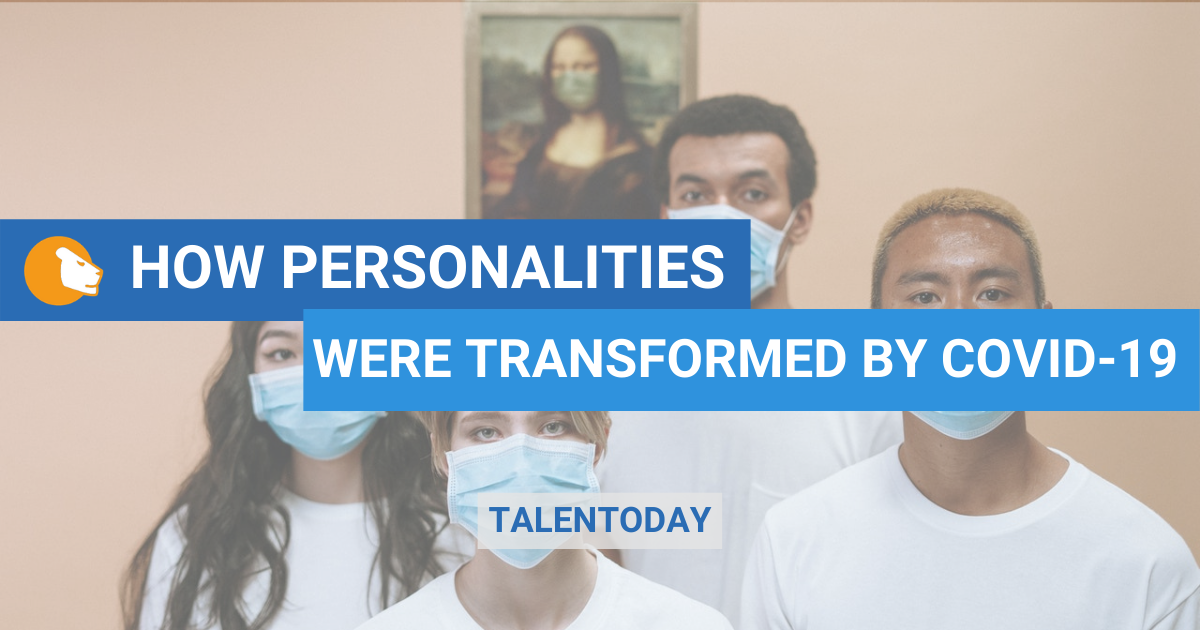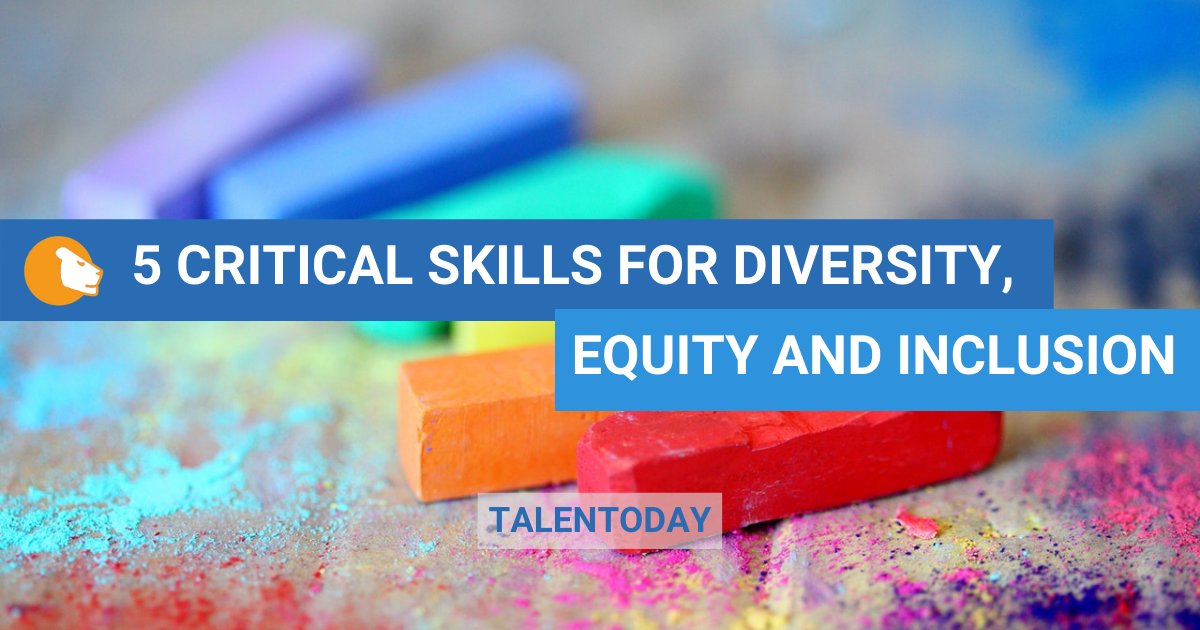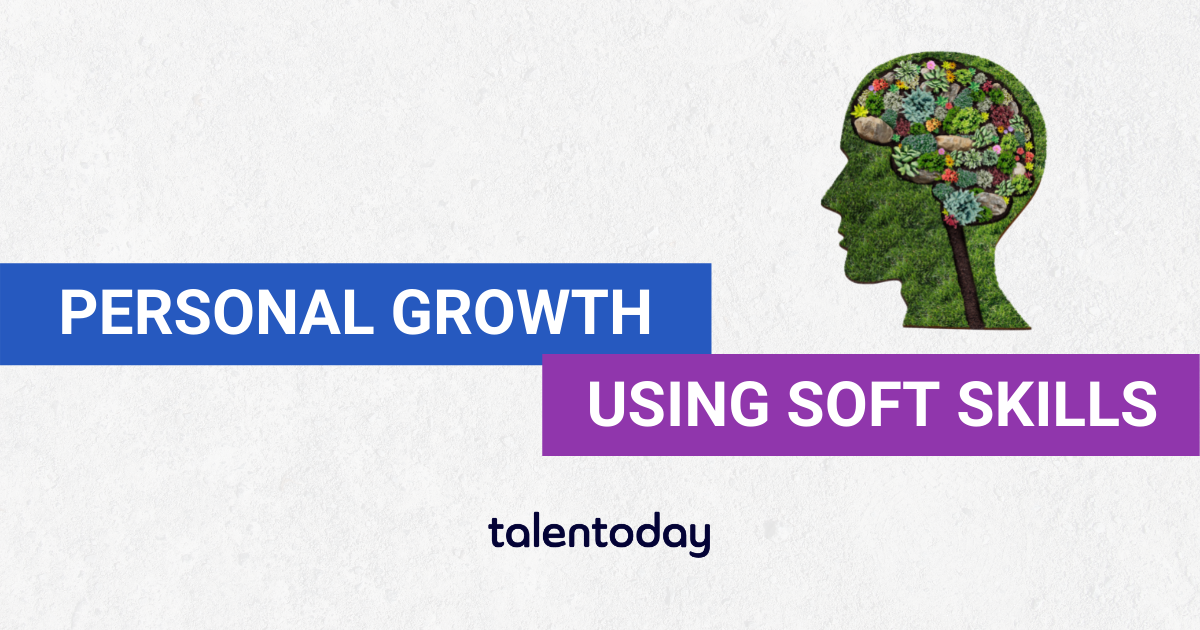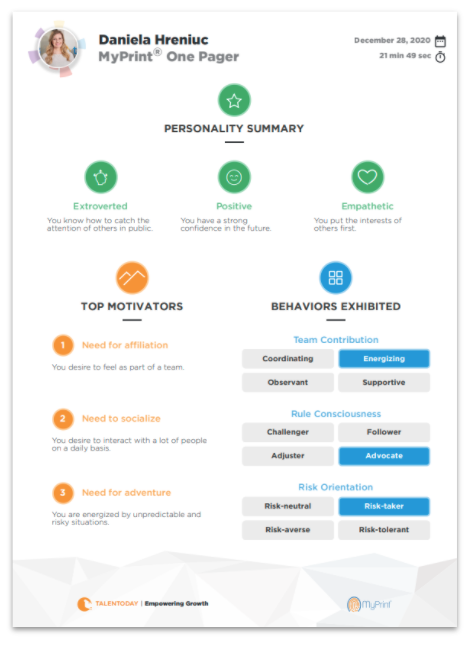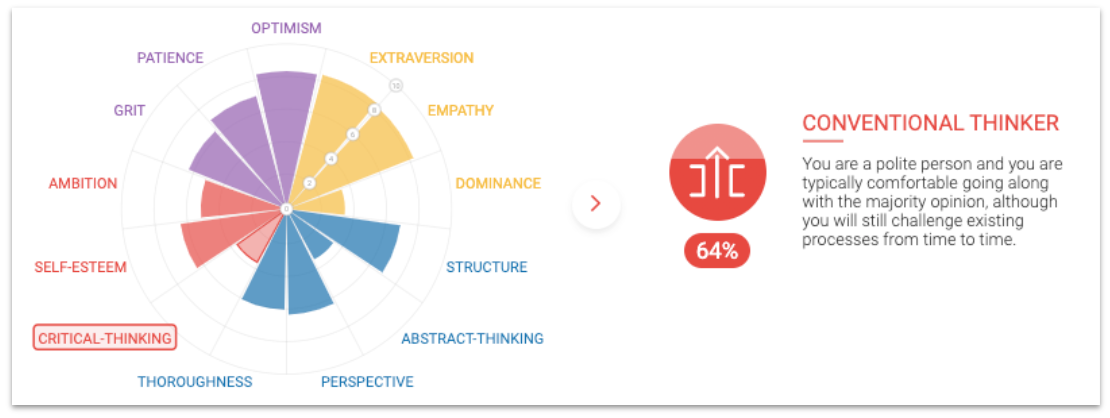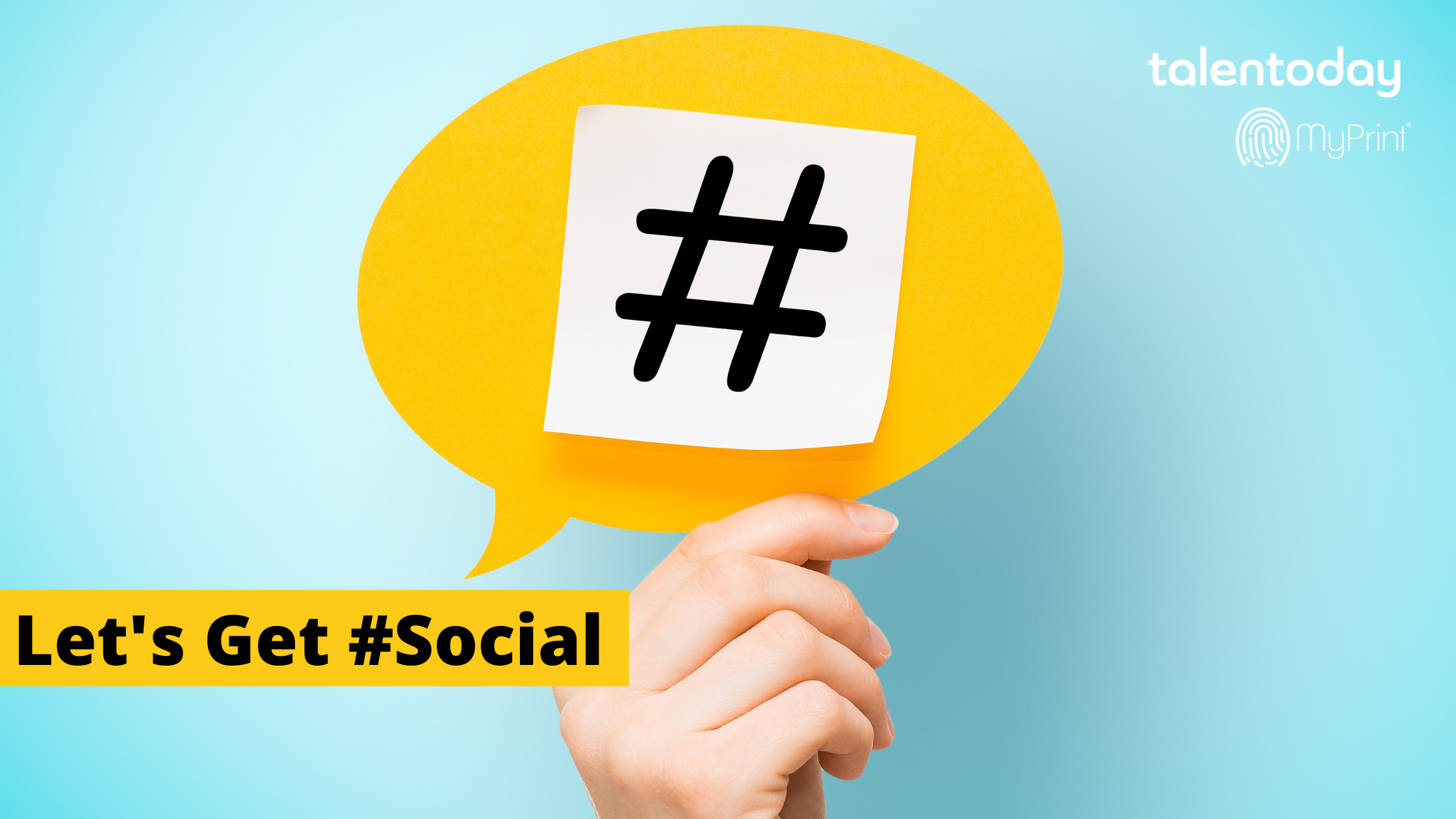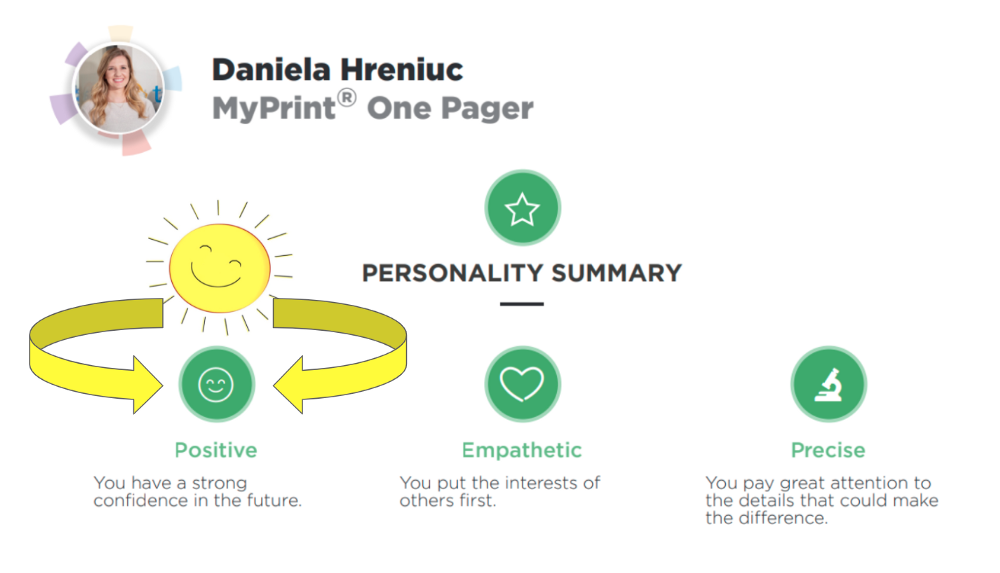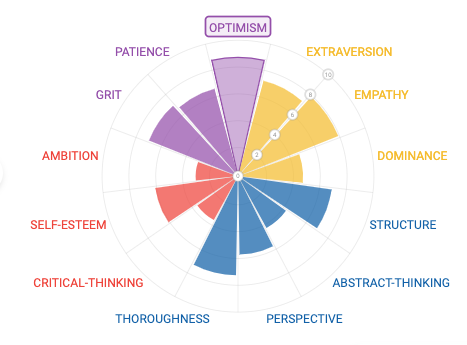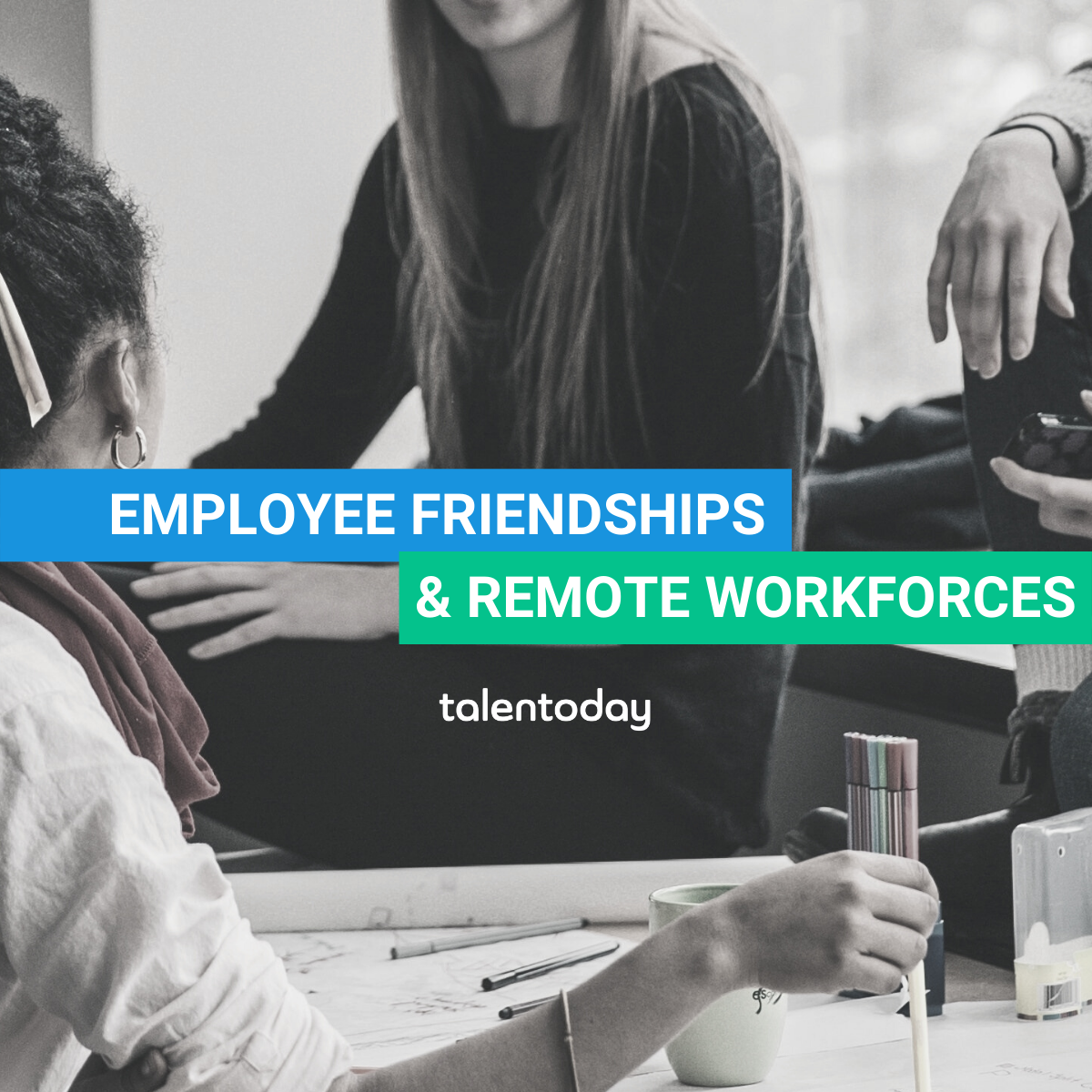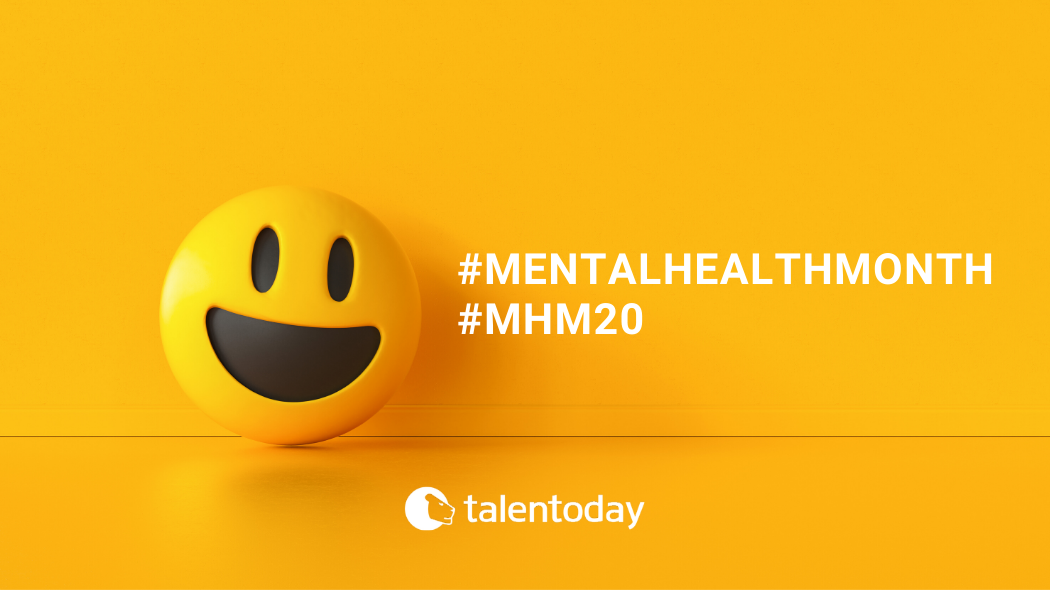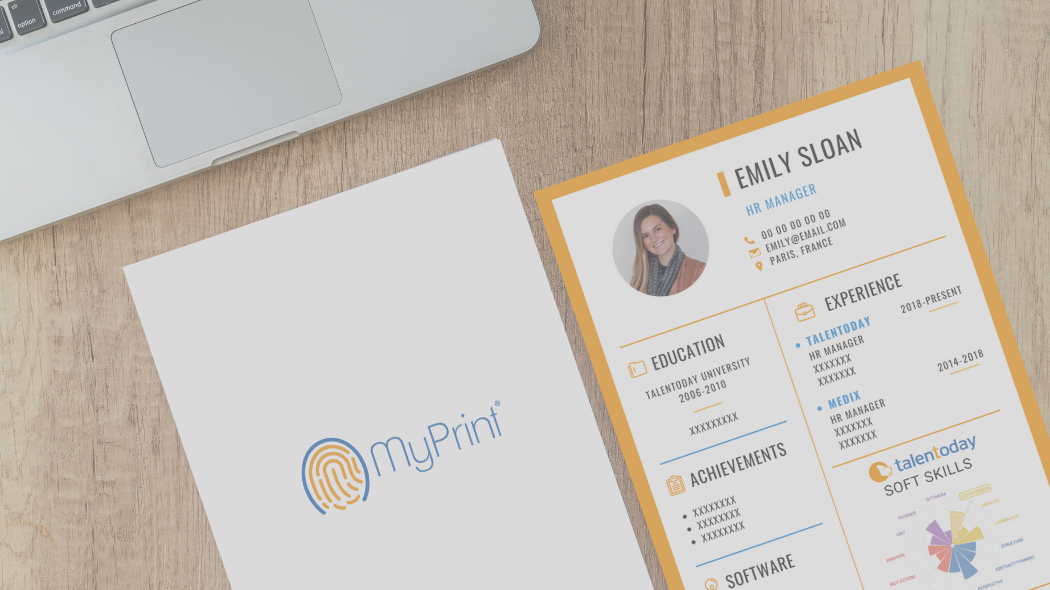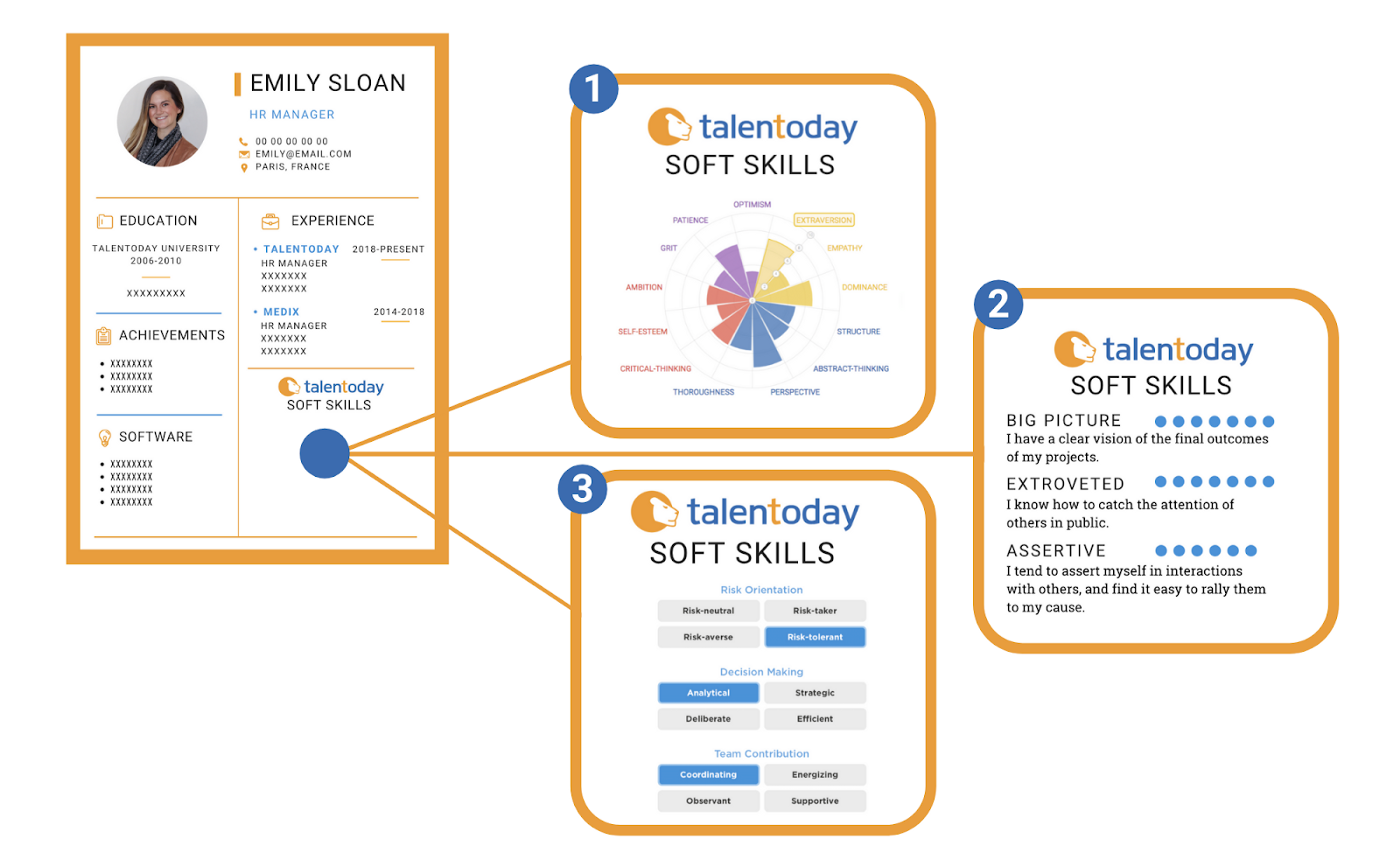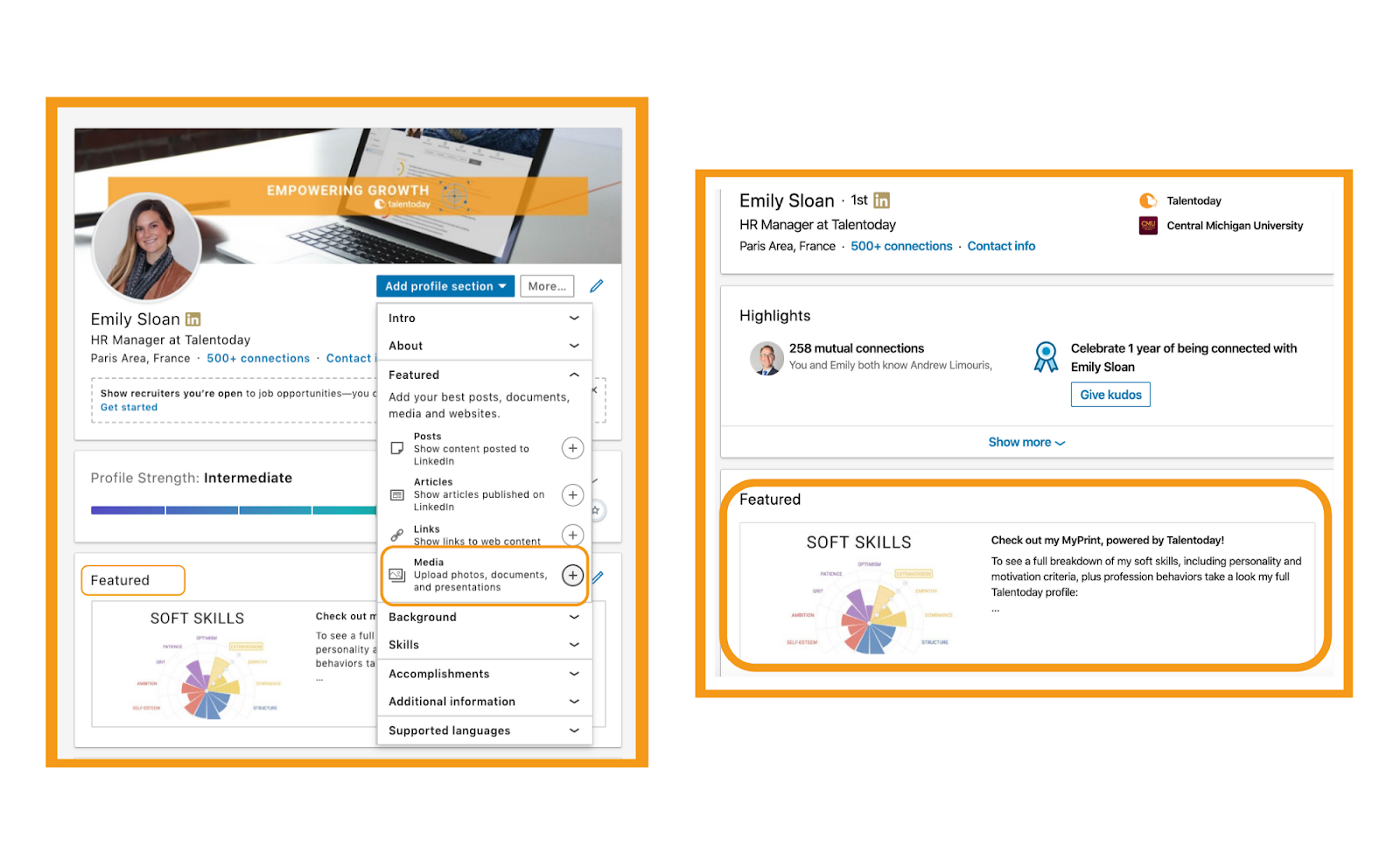Tell a Soft Skills Career Story in Your Next Job Interview
What makes for a great job interview? You know, one of those interviews that makes you say, “I totally nailed it. I know I’ve got the job. It’s time for a happy dance!”
Well, for one, it’s not about reciting your resume word-for-word like some sort of business robot (even if “the robot” is a fantastic choice for a happy dance). Instead, it’s about going beyond the resume to bring the story of your career to life. Then, taking that story a step further to connect your future to the goals of the employer.
The best storytellers don’t just list off events in the order in which they occurred. Instead, they draw the audience in by sharing the unique qualities of each character. In that same way, it’s time to transform your next job interview into an engaging story of what makes you unique as a candidate! To get there, you’ll have to shift the focus from a rehashing of professional milestones to what truly sets you apart — your soft skills!
Chapter 1: Soft Skills vs. Hard Skills
First and foremost, let’s lay out the difference between hard skills and soft skills. Hard skills, also commonly referred to as technical skills, are straightforward requirements for a position that employers can easily check off of a list. Does this applicant have the necessary degree? Did they complete training in this particular area? How many years of experience do they have in the industry?
Hard skills may be a prerequisite for getting your foot in the door, but soft skills are the key to unlocking the full power of your career story. These are the skills that touch on the less tangible elements of the way we work together. Soft skills bring to mind things like communication, leadership and teamwork. In other words, the elements of a great story!
Chapter 2: Identifying Your Soft Skills
If job interviews are all about storytelling, then every job candidate needs to build a narrative with a compelling beginning, middle and end. To start telling your story, think back to previous experiences in your work, education and outside activity history. What made you successful during those experiences? When did you fall short and why? What are you hoping to improve upon as you turn the page to a new chapter in your career?
As a starting point, consider using your resume as a reference. Then, begin writing out these key career moments from memory with soft skills as your focus, going beyond the bullet points to fill in the rich details. Unfortunately, our memories can only tell ourselves and our audiences so much about the way we interact with others in professional settings. In order to go deeper when identifying your soft skills, consider taking an assessment backed by science — like MyPrint®! Supporting anecdotal evidence from your career and experiences with tools built on data-driven people analytics can add credibility to your claims.
Chapter 3: Putting Soft Skills in Action During Questioning
Once you start seeing the job interview process through the lense soft skills, you’ll notice how many of the most common and difficult questions can be easily answered with soft skills in mind.
Here are five of the most common job interview questions, as well as the areas of soft skills employers are look for in your response:
- Can you tell me about a time when you overcame a significant challenge at work?
- What happens when you have multiple deadlines and how do you prioritize?
- Give me an example of when you had to work closely with someone who was difficult to get along with. How did you handle interacting with that person?
- Can you tell me about a time when you had to ask for help?
- What is your preferred management style?
When you answer questions like these, answer with your soft skills! If you are unsure what your strengths are, look at your MyPrint One Pager. What are your top three personality strengths? For example, if you are Empathetic, you might excel working with difficult people because you can put yourself in their shoes and understand why they behave in certain ways. If you are Easy-Going and know that details aren’t your forte, you might be more inclined to reach out to a detail-oriented colleague when you have projects that require precision. The more concrete the example you can share, the better!
Writing an Ending with Confidence
It’s a tale as old as time — the job candidate makes it to the end of the job interview journey only to feel like they missed out on a golden opportunity. One way to avoid this tragic fate is to turn your job interview into a story about soft skills! Prepare for your next meeting with a potential employer by thinking about your career as chapters, each highlighted by the traits that make you unique.
Are you looking to turn your next job interview into the story of your soft skills? Click here to take MyPrint and receive a detailed assessment of your unique personality, motivational and behavioral traits!
The Soft Skills Resume is Here to Transform Your Boring Job Search
Resumes are boring! There, I said it. Job seekers know it. Hiring managers know it. Heck, the entire working world knows it! Why, then, are we all creating the same, cookie-cutter resumes over and over again expecting different results?
Thankfully, it doesn’t have to be this way anymore. Toss out that boring, black-and-white career document and say hello to the soft skills resume!
Why Soft Skills?
First things first, let’s sort out why soft skills are so important in today’s hiring landscape. Years ago, the conventional wisdom was that finding a job was a straight-forward process. Either you had the skills to do the job or you didn’t, simple as that! This way of thinking only accounted for technical skills, also known as hard skills. Think of hard skills as the nuts and bolts of how to do the functions of a job that a person could learn through formal education. For example, before a doctor practices medicine, they should definitely go to medical school first.
Soft skills, on the other hand, relate to the unique ways we connect to one another while we work. Examples include communication, leadership and teamwork. While hard skills like education and previous work experience might help you book a job interview, it’s actually soft skills that will ultimately help you land the job.
Unfortunately, identifying soft skills remains a challenge for everyone involved in the job search. In fact, a recent survey from LinkedIn found that while nearly 75% of job seekers polled feel it’s important to highlight their soft skills, the same percentage of hiring managers believe a standard resume is insufficient in evaluating a candidate’s soft skills. Clearly, both sides of the interview table need to find a new way to communicate with each other.
Identifying Your Soft Skills
Soft skill-focused resume writing requires self reflection. To get started, think back to previous work or education experiences and consider the things that made you successful in what you did. Was it your ability to communicate with your peers that set you apart? Did you rely on a knack for scheduling and organizing your day? Maybe you’re a pro at paying attention to all of the details or you found a way to adapt and be flexible when situations changed. The moments of preparation and execution that stand out in these memories are probably going to be your soft skill strengths!
However, the pictures in our minds can only tell a small portion of the soft skills story. To go deeper when identifying what makes you unique, consider taking an assessment backed by science — like MyPrint®! Supporting anecdotal evidence from your career and experiences with tools built on people analytics and strong data can add weight and credibility to your claims.
Creating Your Soft Skills Resume
Once your soft skills are identified, it’s time to transform your resume by making them the stars of the show. This can be accomplished with two key changes to the typical resume format: creating a separate “Skills” section and sprinkling soft skills throughout the rest of your resume.
- Skills Section: At this point in your jobs search, you’ve most likely come across templates for standard resumes that include flashy sections for education and work experience. It’s time to set aside an equal amount of space for a section dedicated to your skills — both hard and soft. To build out this section, start with an exhaustive list of all of your skills. Then, add or remove the skills that best apply to the particular job opportunity.
- Sprinkle Skills Throughout: While facts and figures will provide powerful takeaways in the work experience and education sections of your resume, soft skills can add depth to these areas as well! For example, instead of leaving a bullet point of information feeling cold without context, like, “Compiled spreadsheets for 6 accounts” add a bit of soft skill spice by rephrasing the same bullet point this way, “Applied detailed-orientated thinking during data entry across 6 key accounts.”
Let’s face it, the old days of boring resumes are rapidly falling to the wayside. Today, job seekers and employers alike are putting a premium on tapping into what makes a workplace unique. The best way to highlight your true self in the limited space of a resume is to transform it into a document that puts soft skills front and center!
Do you need more help turning your resume into a showcase of your soft skills? Check out our recent blog post on steps for infusing your MyPrint results directly into your resume!
How Our Personalities Were Transformed By COVID-19
Human beings are incredibly adaptable. Consider all the ways life has changed in response to the COVID-19 pandemic. From shrinking social circles to becoming comfortable wearing face masks to learning what six feet of distance really looks like, our society has found ways to adjust to a new way of living out of sheer necessity. However, these transformations run even deeper than just what the eye can see. Beyond the obvious signs of physical distancing, people have been adapting to our changing world in other ways — especially when it comes to their personality.
What Our Research Reveals
Based on MyPrint® personality assessment data from the last year, while the core of what makes most individuals unique may have remained intact, there are clear trends that point to changes occurring in our personalities happening broadly. In particular, our research points to changes in the grit, thoroughness, structure and optimism dimensions of personality.
Here’s what the four most prominent changes we’re tracking in personality mean for individuals moving forward. Have you recognized any of these changes in your own personality?
Developing an Opportunistic Approach
Being opportunistic is an important part of the grit dimension of personality. Think of grit as an indicator of how determined an individual may be to stick with something they’ve started. A high level of grit can be a wonderful trait for anyone who is known for seeing every project to its completion. However, as the realities of life during COVID-19 became apparent, most individuals dialed down this particular trait. One explanation is that the situations many people faced required a shift in plans. That determined, or “gritty,” mindset has been shifted to an opportunistic approach, as the need to adapt to rapidly changing circumstances outside of anyone’s control have become more prevalent. In other words, rather than seeing each particular challenge to the end, many of us moved onto new opportunities that fit better into our new world of work.
Becoming More Easy Going
In a year in which many people put on sweatpants and embraced a more laid back approach to their work from makeshift home offices, it might not be all that surprising to learn that thoroughness moved closer to the “easy going” end of our personality scale. What this means is not necessarily an increase in sloppiness, but a preference for a higher quantity of work outputs over the quality of that work. After all, in many roles, the shift in work environments presented any number of new challenges, and an unfamiliar amount of unstructured time with which to get them done.
Prioritizing Spontaneity
Speaking of structure, raise your hand if you forgot which day of the week it was at least once in 2020. If your hand is in the air right now, don’t worry — you are not alone! Our research indicates that personalities dipped in their levels of structure over the course of 2020, leaning further into the spontaneous end of our scale.
Personally, I know my entire routine was completely upended in the last year. In a matter of days, my morning alarms, commute plans, meeting schedule and meal prep strategy went right out the window. Suddenly, if I wanted to sleep an extra hour, that was okay! If I felt like having a homemade omelet for breakfast on any given Wednesday, I could bust out the eggs and get cracking! However, this shift towards less structure also had effects well beyond extra snoozes and creative meals. The lines became blurred around which types of projects needed to be done when. The boundaries between work and home were breached.
Increased Optimism
On the bright side, personalities appear to have been pushed to the positive end of our optimism scale! At first glance, this trend might appear to be counterintuitive. After all, in a year filled with so much darkness, how could optimism be on the rise? It turns out that this may be the greatest indication of human resilience revealed in our analysis. When faced with adversity, individuals have time and time again shown the ability to find even the smallest silver linings in a given situation. As our goals collectively shifted from narrow-minded personal achievements to group survival, small wins became reasons for real celebration.
As vaccinations are administered, the world stands poised to step forward into another stage in the fight against COVID-19. Even as we remain hopeful that this virus will someday fade away entirely, the changes we experienced in our personalities will remain long after the masks are put away. Human beings are incredibly adaptable. While that means individual traits may shift in response to situations beyond our control, what makes us unique carries on.
Are you interested in learning more about how your personality has evolved over time? Take (or retake) the MyPrint® soft skills assessment today to unlock personality insights. Click here to get started.
Social Awareness in the Workplace: Do You Have These 5 Critical Skills for Fostering Diversity, Equity and Inclusion?
Following the mass protests and grassroots social movements that have come to define the summer of 2020, many businesses felt compelled to speak up and reevaluate their diversity, equity and inclusion (DEI) efforts. Not only was it the right thing to do, but recent research from Monster found that, “more than 86% of candidates say that diversity, equity and inclusion in the workplace are important to them and 62% of people would go as far as turning down a job offer if it came from a culture that didn’t support a diverse workforce.” It’s feedback like this from job seekers that earned DEI a spot on Medix’s list of the hiring trends that will define 2021.
Thanks to individual employees, many organizations have recognized the importance of these efforts in the last year; however, achieving the kind of progress being asked for across all industries is another story. According to the Society for Human Resource Management (SHRM), “Organizations cannot become multicultural by proclamation. It takes concerted effort.” In other words, while posts on social media talking about creating a diverse workforce may be a positive step forward, real change requires action at a personal level.
To get there, individuals within an organization need to develop the skills that allow for real growth within a company culture. SHRM identifies five traits leaders and employees alike must focus on when adopting a diverse mindset: Openness, Flexibility, Social Dexterity, Emotional Awareness and Curiosity.
Here’s what research behind soft skills tells us about each of these five critical traits. Through self evaluation, you can identify which areas are strengths for you, and which ones may need some development. By bringing more awareness to these five traits within yourself, you and your teammates can help drive DEI efforts in any organization:
Openness
When it comes to openness, it’s a characteristic that points to a person being “receptive” in terms of their communication style. These people tend to be low in dominance in terms of their personality and don’t feel a need to influence others in order to be motivated. Employees who are able to tap into this sense of openness can be powerful allies as organizations expand their DEI efforts. A workplace that embraces these receptive communication styles allows different opinions and thoughts to be heard in a group, rather than having each person simply caring about their own opinions and trying to convince others to see things their way. Ultimately, the goal is to open up more opportunity for diversity of thought to be expressed and implemented in group settings.
Flexibility
No, flexibility doesn’t just refer to a person’s yoga skills! Rather, it’s an indication of people who may appear lower in grit in terms of personality and have a low need for competition to be motivated. While a lack of grit or competitiveness may sound like a negative to some, what this means is that this person may be more likely to change what they are doing in order to move onto whatever is more valuable for them to be working on — showing that they are flexible and adaptable to their environment.
Think of it this way: When someone is able to switch their focus to what is best for the team, and is also motivated by doing things as a collective effort, then the group as a whole is going to be more open to success. This creates a culture of support for one another, which is key when making diversity a top priority.
Social Dexterity
One of the ways organizations become closed off from the principles of DEI in the workplace is through the forming of cliques — small social circles designed to exclude those with differing interests and opinions. Thankfully, one of the most powerful weapons for breaking through the clique mentality are individuals with high levels of social dexterity. These people energize teams by having highly extroverted personalities and an intense need for relations to be motivated. With social dexterity in a group, there’s less of a chance for ‘outsiders’ to be pushed aside, since those energizing individuals will seek out connections with everyone.
Emotional Awareness
One crucial element of social awareness is emotional awareness, or the ability to make decisions and base actions first and foremost on how it impacts others. In other words, people who understand emotional awareness have highly empathetic personalities and are motivated by their need for belonging. Individuals who put an emphasis around being emotionally aware of those around them are going to help empower an inclusive culture by making sure that nobody is forgotten. By finding ways to allow everyone in a group to feel as though their thoughts and opinions are being considered, these individuals help to make others feel seen and heard within an organization.
Curiosity
Critical thinking personalities are naturally curious; they are motivated by a need for variety in their daily activities. Curious people ask a lot of questions, and this can be an invaluable trait as organizations seek out a path to DEI efforts that work for their organization and team culture. In most cases, curious thinkers are not interested in having cookie cutter individuals on their team. Instead, they are energized by people who have different backgrounds, skills, cultures, and opinions from their own. This helps to empower an inclusive workplace by fostering a culture of learning.
Identify Your Soft Skills to Empower DEI
These five traits — Openness, Flexibility, Social Dexterity, Emotional Awareness and Curiosity — may be the key to unlocking a new era of diversity in the workplace. Do any of them sound familiar to you?
To begin developing these skills within yourself, the first step is measuring where you stand in each category. With that baseline knowledge, it will then be easier to find ways to apply your areas of strength to DEI efforts within your control at an organization. For areas in which you may be deficient, this is a time to create plans for developing in the areas critical for fostering the type of work environment so many are fighting to make a reality.
Looking to learn more about how you can use your soft skills to grow diversity, equity, and inclusion at your organization? Take the MyPrint® soft skills assessment today to unlock personality insights that can drive change!
Show Your Traits, Not Your Type
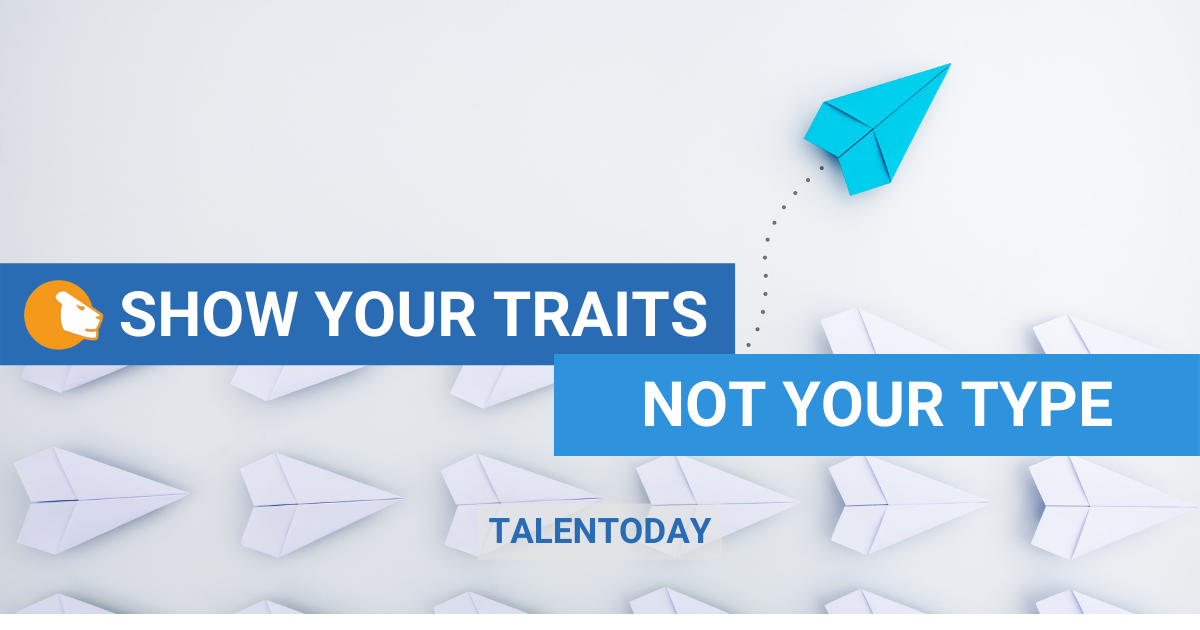
“What’s your type?” In the world of dating, this is the first thing people want to know. An easy answer, right? Intellectual, athletic, artistic — as humans, we typically begin with broad categories to describe ourselves and others. However, once you actually start describing what you’re looking for, you find yourself being more specific. “Likes to have philosophical conversations,” “enjoys outdoor activities in warm climates,” “likes to cook new recipes,” — in reality we are much more complex than those one word generalizations. The same philosophy should apply to soft skill assessments in the workplace. Instead of being bucketed into a generalized type, your traits are the best indicators of your unique strengths. Let’s break down the difference between types and traits.
Type Theory
Type theory is based around the idea that personality is a combination of qualities or dimensions that can be grouped together into a certain number of categories (or types). All people fall within one type based on which group they share the most specific attributes with. Think Myers Briggs or Enneagram, where you are one of 16 combinations of letters (ie, ESFJ) or one of 9 number types.
Yes, type theory is helpful for an organization to get a generalized idea of a person, but does that mean that a company really understands who you are, and more importantly, if you will be successful in the role? For example, if an assessment identifies you as an introvert, the assumption may be that that you are quiet, would prefer to work alone, and you need time to reflect on your thoughts before speaking. It’s a generalization, and while some of those assumptions may be true, chances are not all describe you.
The concern with using types in personality assessments is that humans are much more complex. Instead of Introversion and Extroversion being a dichotomy, it is better understood as a spectrum. That is where trait theory comes into play.
Trait theory
Rather than using broad categories to define human behaviors, trait theory focuses on the individual differences between people and eliminates the ‘boxes’ that type theory tries to fit people into. Going back to the introverted/extroverted example: trait theorists will say that a large majority of people actually fall somewhere in the middle and show qualities of both introverts and extroverts.
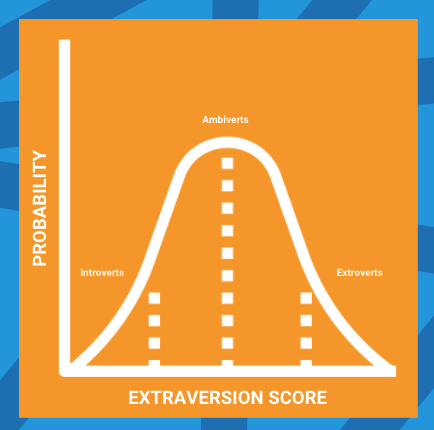
Research over the years has shown that there is enough of a variation in human personality for most of the scientific community to favor trait theory. Additionally, the most widely accepted theory of personality, the Big Five Theory, is part of trait theory. The Big Five is a theory in which five broad categories are the building blocks of personality, which most people have heard of using the acronym OCEAN: Openness, Conscientiousness, Extroversion, Agreeableness, and Neuroticism. Everyone falls on a spectrum in each of these categories, and sometimes these are broken down into smaller and more specific scales. This personality theory is the backbone of many of the personality assessments that are used today, like MyPrint® or the Big Five Inventory.
You are Unique!
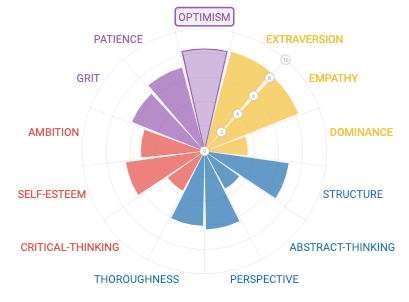
Now that you understand the differences between Types and Traits, which theory do you prefer when it comes to showcasing your soft skills? The one that generalizes you in a standard box, or the one that lets you expand outside those walls to showcase your unique qualities? If you want to discover more about your soft skill strengths, take a free MyPrint® assessment today! Once you have completed the questionnaire, you can begin using your traits to be more productive, improve your interpersonal skills, and set your personal and professional goals specific to your individual attributes. Additionally, you can see how your personality radar and motivation scales show the special qualities that make you YOU!
Looking for additional resources and support? Email Talentoday at customer@talentoday.com to learn more about our assessment and services!
Personal Growth Using Soft Skills
It’s human nature to hit a ‘reset button’ when time gives us a new beginning. That’s why gyms are the busiest on Mondays¹ and personal motivation skyrockets around birthdays². I can’t be the only person who has put off a personal goal for a couple of weeks because it’s the middle of December and January 1st is just around the corner.
Having those reset points are great for helping people set certain milestones and goals for themselves! However, self-improvement and professional development should be ongoing and not dependent on the start of a week, month, or year. There are many ways to go about continuous development: reading books or articles, finding a mentor, or watching videos and webinars are a few great places to start. Although you can take a guess at what areas you should focus on, today we are going to use science to help determine your strengths and improvement areas!
First Thing’s First: Take MyPrint®
If you haven’t taken MyPrint® already then stop reading this and take that first — it’s FREE! All you have to do is go to talentoday.com to create your free account. The assessment itself will only take about 30 minutes to complete. If you are reading this and your MyPrint® is over 6 months old we would recommend spending 30 minutes on a retake.
If you have previously taken MyPrint®, compare your two results and see what you find. Look for the areas where there is the most difference and see if you can determine what the reasons for areas of growth have been. Maybe you have had a life change, a new position, or even relate it back to the global pandemic that took over 2020 — try to pinpoint why those scores have changed.
Discover Your Strengths
Now that you have taken MyPrint®, download your One Pager (soft-skills summary). We are going to be focusing on the personality and motivations section first and then we’ll look at the personality radar in the app later on.
Take a look at your top 3 strengths in the green Personality Summary section of your One Pager. Write down unique ways that those can be useful in your current position at work or in your personal life.
Next take a look at the Top Motivators on your One Pager. Your top three motivators are listed out in orange. Determine if those needs are currently being met in your work life and if they are not, then write down some examples of how you can incorporate those into your daily work environment.
Find Your Improvement Areas
Now that we’ve looked at your strengths from the One Pager a little bit more, we’re going to go back into the app to spend some time looking at the personality radar! If you aren’t sure how to read your radar you can get an in depth overview by clicking the ‘About personality’ button in your profile.
Essentially each of the bars in the radar represents a different personality dimension. You are either towards the inside of the radar, or the outside. Although your first impression might be that the areas towards the inside of the radar are the areas that you need to grow — that is not always the case! For example, someone who needs to be providing concrete solutions to a team might struggle if they are extremely high on the ‘Abstract-Thinking’ dimension.
After you have taken some time to read your radar for a little bit, find those areas that you want to move either up or down on that radar. For example, when I look at my radar I see that my Critical-Thinking scale is a little bit lower than I would like. I am a Conventional Thinker — which isn’t bad at all! However, there are a lot of aspects in my role where I am called upon as a subject matter expert, so I want to ensure that I am not going to just go along with things because that’s what the majority wants. So this year I am going to make a conscious effort to ask more questions about the things that are presented to me so that I can get into a more naturally critical mindset.
Now it’s your turn! I can find about 4 other improvement areas when I look at my radar, but they are all based on my current work situation. Again, this doesn’t mean that I think my current soft skills are bad, it just means that I am aware that in order to grow professionally, I need to be continuously working on my development!
Put Together A Plan
Now that you know your improvement areas, focus on them! Find some books, TED Talks, or articles that you can spend time on each week to help you grow and develop. The second step here is to put together some concrete examples of how you can grow. For example, if you are a Focused individual but want to be more Big Picture — the next time you are planning out a project make a note to specifically think of that Big Picture outcome as you plan and go about your work.
Make a note of people that you work with or know who you think have those traits you are looking for. Does your manager seem to have those Critical Thinking skills that you desire? Make a note to pay attention to how she gives feedback or responds to new ideas in meetings. Maybe your coworker seems to be the most relaxed person on the planet. Take note of how he handles those times of stress and busy times.
Watch Your Growth!
Take MyPrint® again in 6 months. See how much you have grown and developed in those areas, and think of some concrete examples of how your soft skill strengths have helped you succeed in your professional life. The goal here is not to be perfect or ever be done, it is to get yourself into the mindset of continuously growing and developing your strengths.
Looking for additional resources and support? Email Talentoday at customer@talentoday.com to learn more about our assessment and services!
Sources
Let’s Get Social!
Take a minute to think of as many social media platforms as you can. How many of those do you have an account with? How many do you visit on a daily or weekly basis? What type of interactions do you hope for when you log on, and are they different from what you experience?
Social media is pretty wild when you think about it. My grandma grew up during the Great Depression and now she has four Facebook accounts. Not because she has capped out on the friend limit for each one, but because she has forgotten her password that many times.
We can connect with our childhood friends that we haven’t seen in decades, catch up on world news and events, see all the cute dog videos and join groups of people who share our interests, all with just a few clicks! There are obviously unavoidable negative aspects to social media as well, but my positive personality is going to focus on how we can add some sunshine to our timelines!
Our social media campaign
We want to get connected with YOU! Our Talentoday family spans the entire globe. To feel more connected as a global community, we like to showcase our unique traits by inviting our members to share their MyPrint radars to their social media networks. You’ll see us doing this periodically throughout the year because, let’s face it — we can’t get enough of you!
How to get started
First order of business is to take a MyPrint assessment (if you haven’t done that yet, you can do so here). This takes an average of about 25 to 35 minutes to complete, and it’s best to try to take it with minimal distractions around. You can learn more about MyPrint and the science behind the assessment in this blog post!
Immediately after you complete the questionnaire, you will see your results in your profile. Take some time to check those out, learn more about your strengths and what makes you unique! In your profile you will be able to view your personality radar, motivations and behaviors, as well as download your free One Pager report to view your top three traits for each section!
YAWP!
As the late, great Robin Williams says as he plays Mr. Keating in Dead Poets Society, we all have something inside of us that is worth a great deal.
“I sound my barbaric yawp over the rooftops of the world”
-Walt Whitman, Song of Myself
We all have unique traits that make us who we are and those should be celebrated and proudly proclaimed to the world! So to sound those MyPrint yawps over the metaphorical rooftops of the world, we have put in buttons so you can easily share what makes you special to your social media networks! When you share your radar, include our hashtags so that we can connect as a global community.
Let’s work together to add some sunshine to our timelines and show the world what makes us unique!
Looking for additional resources and support? Email Talentoday at customer@talentoday.com to learn more about our assessment and services!
Employee Friendships in 2020
If you’re like me, you’re probably missing your work friends right now. Even if you’re not like me there’s still a pretty high chance of that! Millions of people around the world have been working from home amidst the COVID-19 pandemic, and working in pajamas has become the new normal… okay, maybe not everyone is in pajamas.
Even though we might not be seeing our work pals it is important to find ways to stay connected. A study by Gallup¹ found that workplace friendships are one of the strongest predictors of productivity. In addition, those who have strong work relationships are more engaged, produce higher-quality work, and have an overall higher state of well-being. That same study found that in order to have a thriving day we need at least six hours of social time. Sound impossible? It’s not as difficult as you might think.
The ‘New Normal’
With the ‘new normal’ in the workplace including remote work, social distancing procedures, alternating schedules, and other obstacles that make our social interactions more difficult to achieve, we need to be more intentional about our workplace friendships. These challenges are something that every company is learning to navigate, and it does not have to come at the expense of employee relationships and well-being.
A study done in New Zealand after a series of earthquakes forced many people to move into remote working found that the biggest area of concern to employees was the social cost². This included professional and personal isolation, limited team interaction, loss of visibility and development, and lack of face-to-face communication. Thankfully we live in an age where technology can be our friend and counteract a lot of these concerns!
Zoom, Zoom, Zoom!
Raise your hand if you have used Zoom in the past month. There have been between 200–300 million daily meeting participants on Zoom during the beginning months of COVID-19³. Birthday parties, happy hours, book clubs, classes, and business meetings are just a few of the many social gatherings that have turned virtual in 2020. Leveraging video conferencing can help bring employees together as well!
Do you normally eat lunch with your coworkers every day? Maybe pick one day each week to have a ‘virtual lunch’ with those that you’d normally (or not normally) eat with. Even a quick instant message to your work buddies to ask a question, or simply share what you’ve been binge watching on Netflix, can help add to that six hours of social time needed for a thriving day!
Working in a virtual environment also gives employees the opportunity to reach out to those that they would not normally have the opportunity to work with. Whether it is collaborating on a project with individuals in other offices or departments, or simply reaching out to colleagues to get to know them better, the virtual workplace gives everyone a chance to create new connections that aren’t determined by physical proximity.
MyPrint® for the Virtual Age
With virtual and remote teams being the new normal, it might take a little more creativity to bring your team together! Some fun events that we at Talentoday have done to stay connected are virtual happy hours, knowledge sharing sessions from different departments, and a MyPrint® ‘Guess Who’ game!
As new teammates are being onboarded into a virtual workplace, it can be difficult to get to know each other in the same way you would when meeting face-to-face. You can help to jumpstart these new workplace connections by leveraging a lot of the tools that the MyPrint® assessment provides! Sharing your dominant personality traits, learning how to motivate one another, or reading through your Collaboration Report together can help alleviate some of the pains that come with a virtual working relationship.
No matter what your new normal looks like, whether it is back in the office or in your pajamas at home, MyPrint® can help you and your team to continue to adapt and grow together!
Looking for additional resources and support? Email Talentoday at customer@talentoday.com to learn more about activities like the MyPrint ‘Guess Who’ game and other services!
References
¹ Rath, T. & Harter, J. (2010). Your friends and your social well-being.
Business Journal.
https://news.gallup.com/businessjournal/127043/friends-social-wellbeing.aspx
² Donnelly, N. & Proctor-Thomson, S. B. (2015). Disrupted work: Home-based teleworking (HbTW) in the aftermath of a natural disaster. New Technology, Work and Employment, 30(1), 47–61. https://doi.org/10.1111/ntwe.12040
³ Iqbal, Mansoor (2020). “Zoom Revenue and Usage Statistics (2020).” Business of Apps, www.businessofapps.com/data/zoom-statistics/.
Prioritizing Well-being with Psychometrics
Circa 2019, well-being and soft skills were hot topics of discussion around personal growth and internal fulfillment. However, as we moved into 2020, individuals had new norms to navigate, from social isolation, economic stress, and round-the-clock news coverage for the COVID-19 pandemic. Anytime someone goes through a change, it’s not uncommon for anxiety and stress to increase, and this pandemic is no exception. Based on a study completed by Inpulse, featured in Four Ways Leaders Can Support Anxious And Lonely Teams¹, in mid-April 2020, research found that 65% of employees have felt nervous, anxious or on edge, and 43% have not been able to stop or control worrying. Further, pre-COVID19 pandemic, it was found that people with depression have a 40% higher risk of developing cardiovascular and metabolic diseases than the general population, and globally, depression is the leading cause for disability². For individuals, the ability to identify depression, anxiety or stress plays a critical role in managing their well-being. Luckily, individuals aren’t alone in this, as psychometrics and technology are here to help!
Understanding yourself
Simply put, your well-being is the level at which you feel comfortable, happy and healthy³. The tricky thing about well-being is there’s often more than meets the eye. As humans, everyone is unique in how they interpret their anxiety (or stress), and they’re unique in how they make time — assuming they do — to address their mental and physical health challenges. For many, it’s often easy to prioritize work, family and other responsibilities over one’s own well-being, but that doesn’t make it a healthy or sustainable practice. With the use of technology, companies like HealthPersonas and Talentoday are leveraging psychometrics to uncover the obstacles a person is dealing with and empower them with their soft skill strengths. In both cases, the overall goal is to help individuals increase their level of self-fulfillment, and ultimately their well-being.
Prioritizing your well-being
Now more than ever, psychometrics have the ability to positively impact us and those around us. Even for the most selfless people, taking care of those around you means taking care of yourself first. We are all aware being healthy is more than just physical. HealthPersonas measures and improves emotional and behavioral health, the way we feel and think, taking a well-being approach to healthcare and unlocking personalized results along the way. A key component of HealthPersonas success is their KnowMe™ assessment, which was developed in partnership with Talentoday. KnowMe™ offers a fun user experience that allows individuals to quickly identify what makes us unique and how to best seek health and happiness. To complement the KnowMe™ findings, HealthPersonas offers an engaging mobile experience by providing emotional health support with both chat and video-based expert coaching.

HealthPersonas founder, Alex Bitoun, has worked in healthcare delivering chronic care programs to self-funded employers and health plans for the past 15 years. Alex notes, “Emotional health is a key component to overall health, and is too often ignored in the current care paths. By focusing our efforts on how our members feel, we not only improve their well-being, but we are unlocking clinical results that had eluded them in the past.”
Lean into your uniqueness
Just like each person is unique in how they interpret and respond to adversity, everyone is unique in their personality and motivations. When faced with a challenge, we may see how our personality traits and motivations work together to either lift us up, or potentially bring us down. Although there’s a number of things that we can’t control, through understanding our dominant personality traits and motivations, we can make the choice to create a comfortable environment that corresponds to our needs and increases our overall well-being. Through Talentoday’s soft skill assessment, MyPrint®, we leverage psychometrics to empower individuals to understand not only what their dominant personality and motivation traits are, but we also provide guidance on what environments (or actions) will allow them to hone in on their strengths and fulfill their needs. Through having these personalized insights at your fingertips, you can make incremental changes in your daily routine, work style or relationships, to increase your sense of self-fulfillment and even share results with those that you collaborate with most often for additional support.
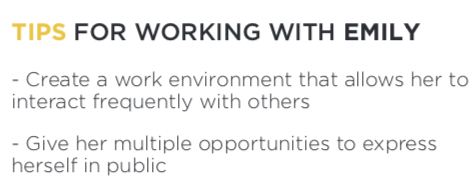
Expanding your reach
With about half of employees feeling some form of anxiety, worry or sadness, odds are someone close to you is battling some degree of discomfort during this time. With social isolation changing how we interact with people, from limited (or no) in-person conversations to hugging our family, individuals have been relying on technology to create a sense of connection. As a number of people leverage FaceTime, Zoom and other communication platforms, psychometrics-based technology opens the door for a new type of collaboration. Whether it’s sharing your insights with those around you, encouraging them to do the same, or utilizing virtual health services (like those offered by HealthPersonas) you’re empowering the people close to you by removing stigmas associated with well-being and mental health support, while providing them tangible solutions. Similar to how you have to prioritize your own well-being to achieve the positive impact of these digital solutions, you have to encourage those close to you to do the same.
The concept of well-being, seemingly simple when you break it down to its most basic parts — happiness, health and comfort — is anything but simple when you think of the uniqueness and complexities of each individual. Luckily, both the technology and psychometrics used are equally as complex behind the scenes, while providing easy to understand solutions to the end user. For individuals ready to prioritize themselves, even if it’s just for an hour a day, you can get started by taking both the KnowMe™ and MyPrint® assessments. Both assessments can be completed totally free of charge and will give you access to your individual insights, enabling you to put your well-being front of mind.
Looking for additional resources and support for mental health? See National Alliance on Mental Health (https://www.nami.org/home) and Mental Health Foundation (https://www.mentalhealth.org.uk/).
For more information on Talentoday visit our company website or you can reach out to us directly at contact@talentoday.com.
Boost Your Profile with MyPrint®
You just completed your MyPrint® assessment, you recognize your strengths and reviewed your personality radar — now what? Luckily for the Talentoday community, there are unique ways to use your MyPrint® results to boost your profile for potential employers, within your network, and possibly to foster internal mobility. In The Hard Truth about Soft Skills¹, David Lambert, the president of Pinnacle Placements, sheds light around the importance of soft skills in hiring, saying “Hard skills will get you the interview — soft skills will get you the job.” To help Talentoday’s community land the job and achieve their career goals, we’re here to provide additional insight on using your MyPrint® assessment results to enhance your resume and boost your LinkedIn profile.
Validate Your Soft Skills with Talentoday
When updating your LinkedIn, creating your resume, or even during a job interview, it’s easy to speak to your soft skills, such as being “detail oriented” and “determined.” However, for recruiters and hiring managers, the ability to validate this before making a hiring decision isn’t foolproof. With MyPrint®, you’re able to change the way you present yourself by backing your soft skills with science. At Talentoday, when developing the MyPrint® assessment, our team of experts utilized premier industry practices, such as IRT scoring (formally known as item response theory scoring) to test and enhance the assessments validity, and also gained an accreditation from the American Psychological Association (APA) to establish credibility and ensure our assessment provides meaningful, scientifically-grounded, results.
Supercharge Your Resume with Soft Skills and Professional Behaviors
When creating your resume, there are a number of ways that can utilize MyPrint® to show your strengths. To do so, we suggest that you add a Talentoday specific soft skills section to your resume. Additionally, you also have the option to download and provide recruiters, and/or hiring managers, with your full one-page report.
For examples on how to use MyPrint® to enhance your resume, see the below examples:
- From the Profile section of the Talentoday app, take a snapshot of your personality radar and include it in your resume.
- From the one-page report, list our top three personality traits and provide the ranking visually from your percentage on the personality criteria pole. You can go one step further by including a brief description of what this trait means, based on the description in the one-page report.
- From the one-page report, insert a snapshot of your top three professional behaviors exhibited.
Showcase Your Uniqueness on LinkedIn
With nearly 675 million members on LinkedIn², Talentoday can be used as a tool to make your profile unique and provide further insights into who you are. To add your MyPrint® profile, or your one-page report, you can use the “Feature” section of LinkedIn to add an image, or PDF, with a brief description (as seen in the images below). We suggest adding a snapshot of your personality radar or the full one-page report. In the Feature’s description section, you also have the ability to add the full URL link to your Talentoday member profile.
Through Talentoday’s application directly, you also have the ability to post your Talentoday profile to your feed on LinkedIn (as well as Facebook and Twitter), by clicking the appropriate social icon as found in the upper right side of your Profile page:
Now that you have the right tools to share your soft-skill insights in a more meaningful way, take another look at your profile and the one-page report. Of the results provided, and our recommendations on how to share your results, pick items that best highlight your professional strengths and allow you to present yourself to potential employers, or just generally within your network, in a unique way that is tailored to you.
Haven’t taken the MyPrint® assessment yet? Set aside 25 minutes, in a non-distracting space, and click “Take the free test” on our company website (www.talentoday.com) to begin.
For more information about our science and product, visit our company website or you can reach out to us directly at contact@talentoday.com.
Sources:
- Mark Tarallo, 2019, The Hard Truth About Soft Skills, Society for Human Resource Management (SHRM)
- “About LinkedIn,” LinkedIn Newsroom, https://news.linkedin.com/about-us#statistics




